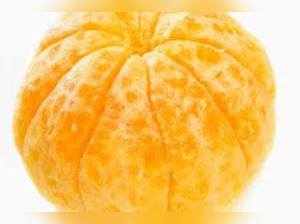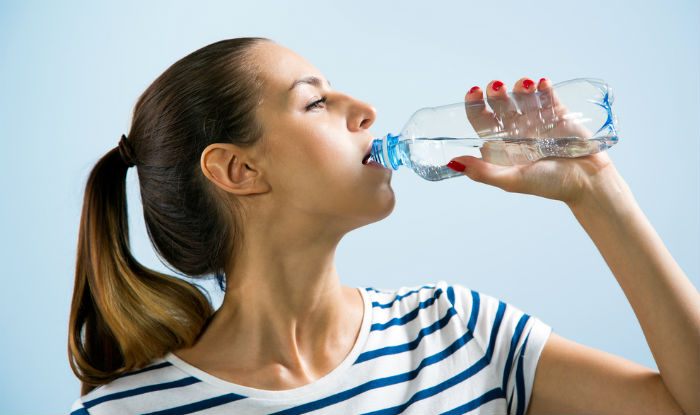
Health and Lifestyles represents a representative sample of the British population. The aim is to find out the health status of the population, as well as their diet and exercise habits. It was done between May and Juni 2009, and the results are widely reported. These data will be used to identify the most efficient health-care programs. The study involved a large percentage of the population, roughly half of whom were over 40. Participating in the Health and Lifestyles study has many benefits.
It is the largest-scale study to date of British health and lifestyles. The survey's findings examine how lifestyle factors affect people's physical, psychological, and social well-being. This study focuses on the social and psychological environment of an individual and identifies patterns of health-related behaviors. It offers important insights into how these factors influence lifestyle and health. It is also useful in helping researchers to understand the causes and possible solutions for many common diseases.

Two major issues are preventing health and lifestyle researchers from succeeding. The first concern is how to measure the effect of healthy lifestyles on a community. The second is that the analytical methods used are not up to date with theoretical developments. Some studies use cluster analysis or factor analysis. However, they fail to test causal hypothesises. These studies are nevertheless more extensive than other studies. Policymakers can improve their policies and encourage healthy living by gaining a better understanding of the relationships between lifestyle and health.
Research in health and lifestyles examines the differences among groups. The study showed that children in the safety problems class had lower behavior scores than those who were part of the consistently positive class. A hypothetical child in the "safety issues" class was at or above the sample mean on all outcomes. These results revealed that those who were from lower social classes or higher social status led healthier lives than the rest.
Numerous studies have found that there is a relationship between a healthy lifestyle, and the development of psychosomatic symptoms. This relationship varies depending on gender and country. The more healthy a person lives, the lower their symptoms are. When they lead a healthy lifestyle, for example, the symptoms of boys in Greece and Ireland were less severe. These results are crucial for improving the quality of life for children and teens. The study also shows the importance maintaining a healthy lifestyle through exercise and nutrition.

It is difficult to understand the relationship between psychosomatic symptoms, healthy living habits, and healthy mental health. It varies by country and sex. In general, the higher the score on a healthy lifestyle, the lower the symptoms are. In addition, the strongest relationship between healthy lifestyles (and psychosomatic symptoms) is seen in boys living in countries with healthier lifestyles. This is a global variation. This study indicates the importance of physical activity for the quality of life in the long term.
FAQ
Which exercise is best for men
It all depends on your goals. If you want to lose weight, cardio workouts are great because they burn calories faster than strength training exercises.
However, strength training can be beneficial if you only want to build muscle mass. It increases lean mass.
Both types are good for improving your overall health.
If you are looking to lose weight quickly, I recommend HIIT or sprint-interval training. This type of training helps you burn fat quickly by increasing your metabolism. It will also help you stay motivated to train even when your body is tired.
Is it true, that too much protein can cause kidney stones?
Protein helps to maintain healthy bones, tissue, and skin. Consuming too much protein can result is calcium excretion via urine. This can lead kidney stones.
It is important that you note that not all people develop kidney stones when they consume more than 2 grams of protein per kg (2.2 pounds). Some people can eat high amounts of protein without getting kidney stones.
By watching how much sodium you consume, kidney stones can be prevented. The kidneys regulate the amount of sodium they consume. High levels of sodium are linked to a greater risk of developing renal stones.
You can also try reducing your protein intake if you get kidney stones. The majority of adults need protein for half their daily caloric needs. Reduce your intake of protein and you will likely lose weight.
If you do decide to eat more protein, don't go overboard. Do not eat more than 20% of your daily calories from protein.
What does butter do?
Butter is one of the best sources of saturated fats. This type fat is great for your skin and hair. It also helps you build stronger bones.
Vitamin K is also found in butter, which helps prevent bleeding from cuts or bruises. Vitamin K and vitamin B work together to prevent any bruising.
Butter is also rich in minerals, including calcium, phosphorous, and potassium. These elements are good for teeth and bones.
Butter does have some drawbacks. Butter has high cholesterol. Research has shown that high levels of cholesterol could increase your chances of developing cardiovascular disease.
Butter is also high in saturated fat which can lead to obesity and higher cholesterol.
Butter can be spread on bread, but you don't have to dip it into soups or salads if you absolutely must. Bread absorbs more oil than potatoes or pasta.
Can I go to the gym 7 days a week?
Yes, you can go to the gym seven days a week but not all at once. It is important to find a time and place where you can exercise without feeling tired or exhausted.
This will help keep you motivated and give you energy for other activities.
You must also ensure that you eat enough during these times. This will make it so you don't feel tired or sluggish while going to the gym.
Last, you must make sure that there isn’t another thing competing for your attention. Consider avoiding exercising on school night if you have small children. This will keep your attention from your workout.
What is a good schedule for a 7-day work out?
Three days per week should be spent on cardiovascular training, including running, biking, swimming, and two strength exercises using free weights, weight machine, as well as one flexibility/core exercise such as yoga, Pilates. It is important to complete each activity at least once weekly. Maximum 45 minutes should be allotted for each session.
Cardiovascular Exercise: Running/Biking/Swimming
It is important to complete at least 60 minutes of cardio per week. For best results, aim for 75 minutes per week. Cardio exercise can improve blood flow and stimulate muscle development.
Strength Training
Cardio exercises target your heart and lungs. Strengthening your muscles and bones is the opposite. Strength training increases lean muscle mass and helps to burn calories even at rest.
Flexibility & Core Workouts
To strengthen your whole body, flexibility and core work outs are excellent ways to do so. Yoga and Pilates are both excellent choices.
Statistics
- According to the American Heart Association, blood pressure should be checked at least once every two years, beginning at age 20. (my.clevelandclinic.org)
- Get free shipping and 25% off today. (healthline.com)
- According to the American Academy of Dermatology (AAD), men over 50 are at a heightened risk of developing it. (healthline.com)
- An estimated calorie range for moderately active adult males falls between 2,200 to 2,800 calories per day, depending on age. (eatright.org)
- Candidates and applicants must pass all four tests at 70% (minimum level) to graduate from Basic Deputy U.S. Marshal (BDUSM) Training. (usmarshals.gov)
External Links
How To
How do I lose fat by exercising?
Exercise helps you lose calories by increasing your metabolism and oxygen intake.
Moderate intensity exercise is a safe way to lose weight.
These tips can help you to burn fat while training:
-
Cardio exercises like walking, running (or jogging), swimming, cycling, running, and/or elliptical training are all good options.
-
Three times per week, exercise for 30 minutes.
-
Add strength training to your workouts if you are looking to lose more weight.
-
Avoid intense training. You can build muscle without breaking down muscle tissue.
-
Drink plenty of water during exercise. Water flushes out toxins, and keeps your body properly hydrated.
-
After exercising, you should drink low-fat protein drinks. Protein shakes are great for your muscles and energy.
-
So you don’t feel hungry, eat smaller meals throughout your day.
-
Don't skip breakfast! Skipping breakfast can cause you to feel tired and sluggish.
-
Take care of your mind. Stressful situations can slow metabolism.
-
Keep a positive attitude. Research shows that overweight people gain more weight if they believe they are overweight than those who believe they look good.
-
Sleep enough. A lack of sleep makes it difficult to lose fat.
-
Keep active. Get up every hour and get moving.
-
Maintain a healthy diet. You will feel fuller longer if you eat right.
-
Relaxation is possible by finding ways to relax. Your body won't release stress hormones that cause muscle tissue destruction if you have a tense mind.
A balanced diet is one that includes all of the essential nutrients required for growth.
Consider eating six small meals daily instead of three big ones. This gives your body more time to digest the food you eat.
For strong bones to be maintained, you need approximately 500mg of calcium per day. Calcium is found in dairy products like yogurt, fortified milk beverages, orange juices, cereals and bread.
Calcium comes from leafy green vegetables, beans, tofu, nuts, seeds, and cheese.
Vitamin D is required by the body to absorb calcium. Vitamin D can be found in egg yolk, fatty fish, and other fortified foods.
Vitamin E is essential for skin health. It can be found as a vegetable oil, wheat germ, peanuts or almonds.
Your body needs zinc to maintain normal immune function and heal wounds. Zinc can also be found in legumes, oysters, meats and whole grains.
Zinc deficiency can cause fatigue and loss of appetite. It can also lead to depression and impaired immunity.
Insulin resistance is caused by eating too much sugar, which can increase blood glucose levels. Insulin resistance leads to weight gain.
Insulin resistance develops when there are high levels of free radicals in the bloodstream. Free radicals are molecules with unpaired electrons that damage cell membranes and other parts of the body.
Most free radicals come from pesticides herbicides, food additives, preservatives smoking, radiation, chemical in cosmetics, lotions and household cleaning supplies.
Free radical damage can lead to cancer, heart disease, diabetes, arthritis, asthma, and aging.
The best way to avoid free radicals is to eat a balanced diet high in antioxidants. Antioxidants protect against oxidative damage.
Vitamin C, beta carotene (found within citrus fruits, carrots, sweet potatoes and spinach), Vitamin E (found inside nuts, olive oils, avocados and eggs), and Vitamin C (found among mangoes.
Selenium, copper and manganese are all antioxidant nutrients.
Selenium protects cells from free radical damage. Selenium can be found in Brazil nuts and liver, kidneys, liver, kidneys, shrimp, cod, turkey and lamb as well as chicken.
Copper protects eyes, brain, lungs and red cells. Copper is found in shellfish, poultry, meat, and organ meats.
Manganese, an essential component of bone strength, is crucial. Manganese is found in brown rice, spinach, bananas, prunes, raisins, oatmeal, and lentils.
Zinc helps with normal growth, reproduction, as well as wound healing. Zn is found in lean cuts of meat, white fish, poultry, and eggs.